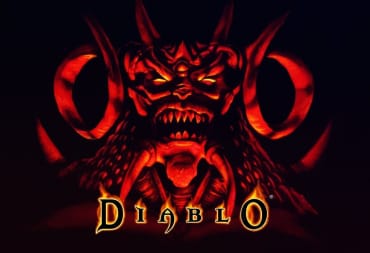Following the rerelease of Diablo on GOG, I tried to put down my nostalgia goggles and judge it for what it is. As a franchise, Diablo sits rightfully on the throne of dark fantasy ARPGs, but how does the original title compare with its more successful sequels? In a way, it depends on how much you enjoy clicking, and how prone you are to develop carpal tunnel syndrome. Joking aside, there are ways to enhance the Diablo experience so that it might appeal to veterans and newcomers alike.
The GOG port in itself is barebones. The launcher gives you two options to choose from. You can pick the Classic version, presenting Diablo in 640x480 resolution at 20 FPS. This really doesn’t look good on a widescreen monitor, and it might mess up your desktop a bit. On the other hand, there’s the updated version, which uses your desktop resolution in a 4:3 aspect ratio. It doesn’t look too bad on a widescreen monitor if you don’t mind the black strips. That’s how I chose to play it, mainly to see if there wouldn’t be any issues. It was fine, maybe a bit blurry, but I really wish it had a built-in borderless window mode. The port doesn’t include any quality of life improvements that you’ll get from projects like the Diablo HD Mod, which I'd highly recommend if you’re a veteran.

In my opinion, the vanilla experience isn’t bad at all, but I highly recommend the Clicker mod, unless you feel like punishing your tendons. There are other mods to choose from online, but it depends on what you’re looking for. I went for the base vanilla experience to see what it plays like nowadays, and also to see whether there would be any technical issues. Everything worked just fine. There were no crashes, no bugs, and no glitches. On the whole, the port works as it should, and you can complete the game with no issues at all.
The one major argument against the rerelease is that it doesn’t include the expansion pack Hellfire, probably because the developer was a Sierra studio, Synergistic Software. I hope that Blizzard and GOG will rectify that at some point. The base game is still definitely worth playing, but there is some great content missing. You could, of course, download a free mod such as The Awakening to make up for it. As for multiplayer support, I didn’t test it, but, according to some GOG users, it’s not optimal. There’s IPXWrapper for TCP/IP connections, but no STUN support for NAT traversal. Matchmaking will take some work if you’re willing to try it.

Diablo still has a fascinating atmosphere and an amazing soundtrack. Starting at Tristram still feels like a unique experience. The village is simple and self-contained, even if the characters are one-dimensional and their lines are repetitive. There’s something archetypal about this village in the middle of nowhere. That’s a good thing, considering you have to visit it again and again as you delve further into hell. The voice acting of each of the characters aged better than I expected. It can get a bit silly, with some bombastic writing, but it still fits the overall setting and the atmosphere.
It’s the relentless looting cycle that defined the Diablo experience. It’s what inspired dozens of Diablo-like games since its original release. This looting experience remains intact, and it’s still every bit as addictive once you commit to exploring the levels. Sure, it won’t live up to the variety of the loot table in Diablo II and Diablo III, obviously, but the blueprint is there. It’s a more rustic and classic array of loot that still manages to keep you hooked as you upgrade your weapons and armor to face bigger and tougher hellspawn.

The different versions of succubi remain every bit a pain in your behind. I had forgotten how annoying they are, especially with a melee-centric build. It was much more frustrating to wipe out the succubi in levels 12-15 than the advocates in level 16. The strategies to clear out levels in Diablo will definitely feel simplistic to those who only played the sequels. You just try to bottleneck the critters through a door and take them out one at a time. With the succubi and the advocates, you’ll have to get a few strays to thin the herd bit by bit. Even with a tank build, it’s near impossible to take out the trash mob as they swarm you.
There are probably smarter strategies with a rogue or mage build, but I wanted to relive the classic melee experience. The UI is rather restrictive for the kind of maneuvers you’d have to pull with a rogue or mage build. It’s possible, but you'll have to be patient. Speaking of restrictive UI, just a reminder that there’s no stash in the base experience of Diablo. You’ll have to use the floor in Tristram as your stash. Don’t forget to pick up the loot and gold before you save and quit, otherwise you’ll lose it.

Although I sometimes felt frustrated during my playthrough, I’d still recommend playing through Diablo at least once, especially if you grew up with Diablo II and/or Diablo III. As they say, great things have small beginnings. The core Diablo experience might feel insignificant compared to the sequels, but there wouldn’t be any sequels without it. The dark fantasy tropes and the unrelenting loot cycle that made Diablo compelling were quite simply genre-defining. Even if you choose to ignore this classic, you should know that it changed gaming in a way that few games have.
TechRaptor reviewed Diablo on PC via GOG with a copy provided by the platform.
Disclosure: GOG is partnered with TechRaptor for affiliate partnership, and TechRaptor earns a small commission off purchases made from some links in this article.
Have a tip, or want to point out something we missed? Leave a Comment or e-mail us at tips@techraptor.net









